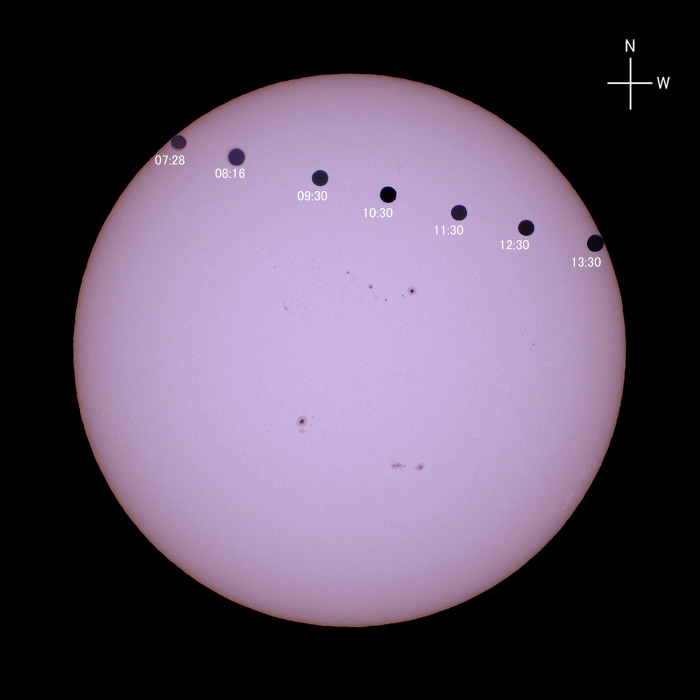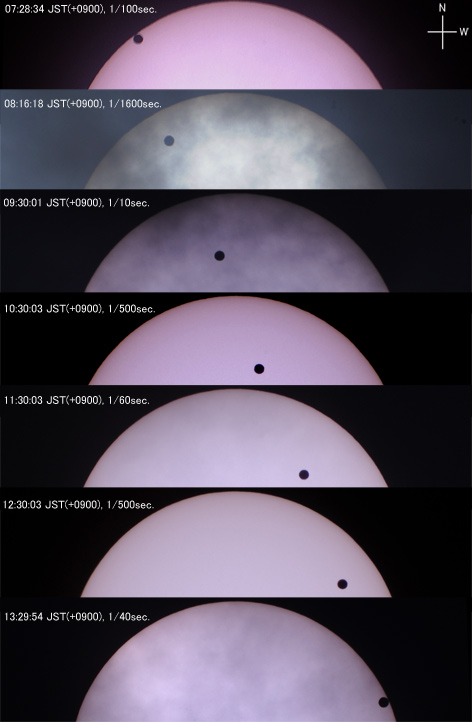Venus Transit, movement of Venus (Jun 6, 2012)
Composed image of movement of Venus (Solar surface at 10:30)
Solar constants: P...Polar angle, B0...Central latitude, L0...Central longitude
Individual images
| Date & Time: | Jun 6, 2012, Times are displayed in image |
| Optical: | PENTAX 7.5cm(2.9") ED refractor with PowerMate 2.5X (f=1250mm, F16.7) |
| with BaaderPlanetarium AstroSolar filter |
| Auto-guided with TAKAHASHI EM-200 Equatorial |
| Digital Camera: | Nikon D700 |
| Location: | Joetsu city, Niigata pref. |
| Camera Settings: | Recording Format...JPEG-FINE(4256 x 2832) |
| Device Size...FX format (36 x 24mm) |
| Sensitivity...ISO400, White Balance...Daylight |
Play time: 53sec., 2fps, 1 flame/5min.
|
This page shows you composed and individual images of all progress of the Venus transit on Jun 6, 2012 with an interval of about an hour.
I aborted record for an hour after 8:16 because of clouds.
You can switch a composed image with/without solar grid and NOAA numbers of sunspot group by clicking on a button in upper right of the first image.
Although I was interfered by clouds in the first half and about to end of the progress, could enjoy observation for about 3 hours in the middle stage under fine blue sky.
The solar central latitude B0 was just zero degree in that day, the Earth was just on the solar equatorial plane.
The Venus passed the sun about along a solar parallel, and crossed the orbital plane of Earth (Ecliptic) from north to south about 13 hours later of end of the transit (passage of descending node).
We can observe the Venus transit only in case that the Earth and Venus are simultaneously positioned with narrow elongation within about 3.5 degrees in front and rear from cross points of their orbital planes, descending or ascending nodes.
A next Venus transit on Dec 11, 2117 will occur at around the ascending node where is opposite point of this and last times in 2004.


